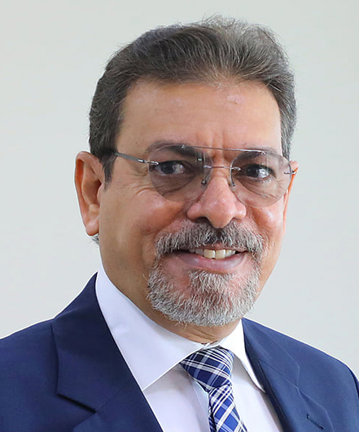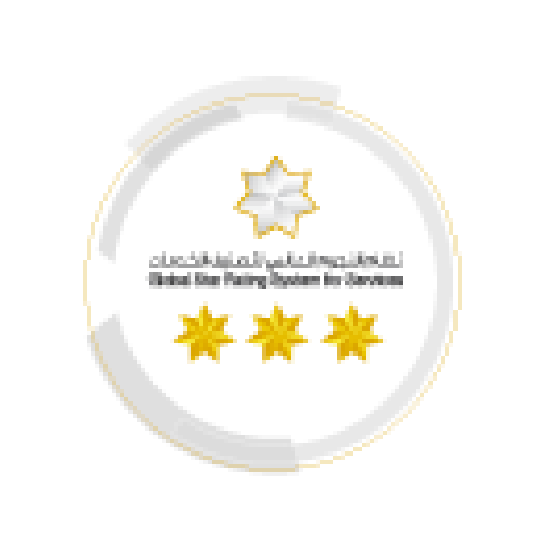UAEU Faculty Changing the Face of Education
Faculty members at the United Arab Emirates University (UAEU) are creating a world-class teaching and learning environment for their students.
Hassan Selim, Professor of Data Analytics in the Digital Era, is a great example through his work as the Director of the University’s Centre for Excellence in Teaching and Learning (CETL).
 The Communities of Practice (CoPs) recruited from creative and innovative members
of the UAEU’s teaching community partnered with the centre. Through their special
talents and practices, they are eager to make a difference within their colleges.
The centre’s main team regularly brainstorms on what is needed at a teaching level,
allowing for greater development within the university.
The Communities of Practice (CoPs) recruited from creative and innovative members
of the UAEU’s teaching community partnered with the centre. Through their special
talents and practices, they are eager to make a difference within their colleges.
The centre’s main team regularly brainstorms on what is needed at a teaching level,
allowing for greater development within the university.
And such work has had a trickle-down effect, with one of the centre’s practices aiming to change the mindset of faculty members from “research versus teaching”. For Selim, both can go hand in hand. “They can conduct research about how they conduct their teaching,” he explains. “They can come up with publications because nobody talks about how to teach your discipline better than you because you are there in the classroom, equipped with subject matter expertise, relevant teaching and learning pedagogies, and the supporting EdTechs.”
He described the practice as spreading the word about the best teaching pedagogies into teaching a specific course, testing and practicing it before collecting data and publishing it. “This is called Scholarship of Teaching and Learning (SOTL),” he adds.
Selim also created a unit within the centre called Teaching Assessment and Scholarship to promote conducting research about how faculty members teach, with the aim of changing their mindset from teaching versus research to teaching and research.
Simultaneously, since the centre was restructured in 2015, the standard began shifting from an information technology training centre to one that deals more with teaching pedagogies and methods supported by EdTechs. As a result, faculty members are trained on how to implement a teaching pedagogy and what part of technology they can use when they adopt this teaching pedagogy. Such technology can also support a blended classroom, conducting team-based teaching supported by computer applications. This work has helped transform different courses to a different modality or even enhance the way faculty teach, using teaching pedagogy and educational technologies. “We created what started as a smart course transformation in 2015, and how smartly you can incorporate educational technologies within your teaching as supporting tools,” Selim notes. “It lasted two years and then we upgraded it to a blended course transformation.”
Since 2017, the centre has been certifying its faculty and helping them change the
modality of their courses from traditional face-to-face to blended courses, indirectly
and unintentionally preparing the team for the COVID-19 pandemic period as such methods
support online teaching, which became handy during the emergency remote teaching period.
Consequently, the Learning Management System adopted by the UAEU was shifted to the
Cloud, as the university has strived to adopt virtual classrooms for years, prior
to the pandemic.  Selim explained the benefits of a blended course as one that allows the use of a virtual
classroom to conduct a session synchronically. Rather than having a few faculty members
shifting online, thousands were able to, thanks to the Cloud’s massive capacity. “We
just needed to increase the awareness and started piloting in one of the colleges
before the pandemic, knowing we would need to switch remotely,” he adds.
Selim explained the benefits of a blended course as one that allows the use of a virtual
classroom to conduct a session synchronically. Rather than having a few faculty members
shifting online, thousands were able to, thanks to the Cloud’s massive capacity. “We
just needed to increase the awareness and started piloting in one of the colleges
before the pandemic, knowing we would need to switch remotely,” he adds.
The team’s experience with the switch from traditional face-to-face to remote teaching and learning was smooth and successful, allowing the university to share its best practices in several international conferences at the beginning of the pandemic.
At the start of the academic year, the university looked to gradually shift back to face-to-face learning, which raised the question of infected students on campus. As such, Selim suggested a HyFlex modality – which combines hybrid and flexibility and allows remote learners to attend face-to-face sessions while they are at home. He gave the example of students in North America, who are given such a choice. Although the practice is easier said than done, due to remote students attending class through a virtual screen, they were advised to observe what is happening in the classroom through their cameras and work in teams with their peers. Such a practice would allow them to participate without losing the advantage of being remote, although it requires a special set-up within a classroom. As a result, the university’s centre, joined by its Department of IT, drafted two plans: long-term, which is still underway and allows to have fixed HyFlex classrooms on campus, equipped with technologies such as cameras, a large screen to show the students’ faces, and a flexible microphone and camera for the instructor to move freely in class. The short-term plan, on the other hand, provides each faculty with a small camera with a built-in microphone, as well as classes equipped with dual smart boards, and built-in speakers to manage their HyFlex classes.
Read more here:Selim, H.M., Eid, R. and Agag, G. (2020), "Understanding the role of technological factors and external pressures in smart classroom adoption", Education + Training, Vol. 62 No. 6, pp. 631-644. https://doi.org/10.1108/ET-03-2020-0049
Overall, the pandemic has had a positive influence on the university, as it began inviting international speakers to conduct webinars to its faculty, which widened their experience and their knowledge. Today, the centre is working with the College of IT to provide the very first micro master’s online, which are not widespread in the region due to scepticism and hesitation in recognising online degrees. Selim spoke of his work with the Ministry of Education to recognise such programmes and with the college to offer them fully online. “Surprisingly, we are the only university with a partnership with the open online learning platform, edX,” he says. “We established UAEUX on edX and we started offering Massive Open Online Courses (MOOCS), which is unique because, once you put a module in there, it will automatically be accessed by hundreds of millions of online learners all over the world.”
The centre has also partnered with Quality Matters to enhance the quality of online and blended course developments, and certify a number of faculty members to be Quality Matters-certified reviewers.
Do you find this content helpful?
عفوا
لايوجد محتوى عربي لهذه الصفحة
عفوا
يوجد مشكلة في الصفحة التي تحاول الوصول إليها

